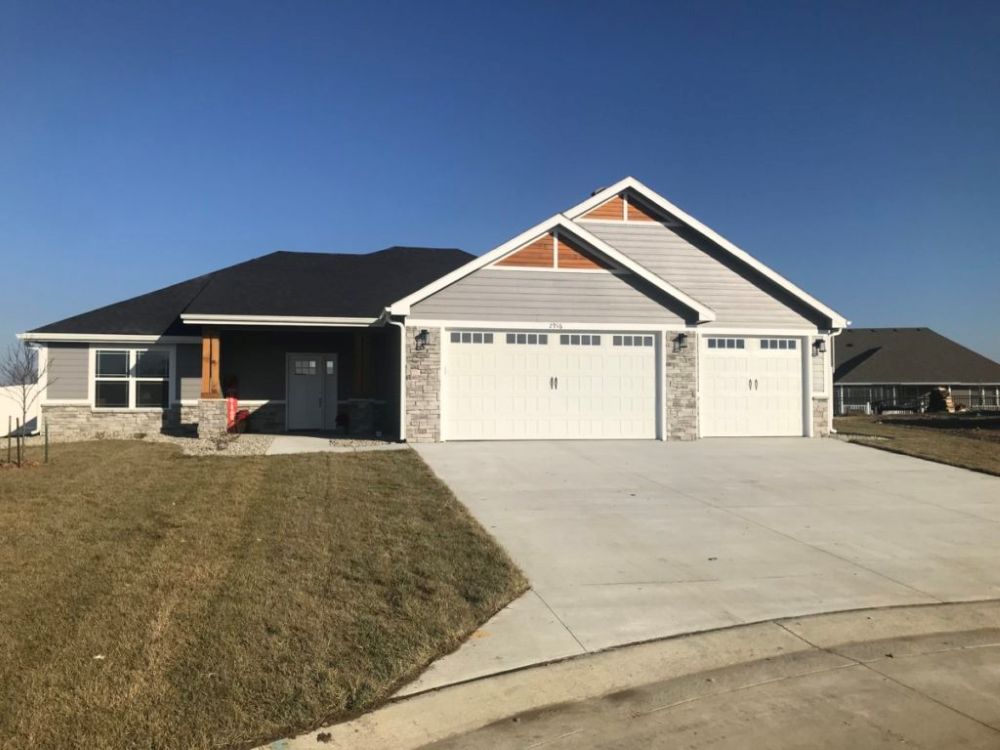
Emporia, Kansas, Has Passionate Residents Working Toward Housing Solutions
March 7, 2025
There is a housing shortage across the United States, and Emporia, Kansas, isn’t exempt from the crunch. According to the Bookings Institute, the American housing market is short 4.9 million units as of 2023. Not only does this make finding a house more challenging, but it also drives up home prices.
“We’re sitting on under a month’s supply of homes in Emporia,” says Jamie Sauder, a Real Estate Broker at Coldwell Banker Emporia Real Estate. “It has been tight since the COVID-19 pandemic and there are currently only 32 active listings in Emporia and surrounding areas.”
Multiple community groups and residents of Emporia, including Sauder, have decided to be part of the housing solution. The City Commission is actively working to develop housing options for Emporia families. Learn more about the changes on the horizon.
Two Subdivisions Are Under Construction in Emporia
The first step is to increase the available housing inventory in Lyon County. Emporia currently has two subdivisions under construction that should provide attainable housing for residents. One neighborhood will have 23 new houses while the other has 27 new homes. These units should sell within the $200-$300k range.
Sauder says that if these properties don’t meet the needs of entry-level buyers, then they should support move-up buyers who are ready for their next homes.
“There are still a lot of people in quality homes who would love to step into something newer and more modern,” says Sauder. Move-up buyers might be couples who are ready to start families or residents who have the equity and income for larger houses.
Building is Often the Fastest Way to Have a Housing Impact
National trends and factors contribute to the housing crunch in Emporia. Many residents bought when interest rates were low, which means they would have to give up those favorable rates for higher ones if they moved. Interest rates are hovering close to 7% in 2025 after plummeting below 3% in 2021. Even throughout the 2010s, interest rates rarely reached 5% for most borrowers. Selling now would mean an equal or higher monthly mortgage payment for many people.
“It’s challenging from an economic standpoint but also from a Realtor perspective,” says Sauder. However, he says that building is perhaps the quickest way to “loosen the gears that are stuck.”
More inventory means buyers will have more options to choose from, ideally at different price points. Growing housing inventory can also support population growth in Emporia. New residents can find houses they love instead of bidding sight unseen whenever a new property hits the market.
New Housing Projects Need Support from Local Government
It’s easy to say that communities should build more housing to combat the national shortage, but recruiting, planning, and approving these projects is more complex. Sauder joined the City Commission to provide insight into housing development so the city could make strategic decisions that create healthy, lasting growth for Emporia.
“We needed to get our city off the sidelines,” says Sauder. “If we wanted to have an impact on our housing shortage, the city was going to have to invest in it too.”
This means investing in infrastructure. Emporia needs infrastructure to support residential housing development, but it can’t build more infrastructure than it can afford to maintain. “Every road deserves to be maintained,” he says.
Along with investing in new infrastructure and looking for open land to build on, the city has also identified pockets of the community that have existing infrastructure and opportunities for housing. This allows for incremental growth that is also sustainable.
Addressing Housing is Essential for Economic Development
Communities can’t afford to ignore their local housing shortages, which is why Sauder (who is also the 2025 President of the Kansas Association of Realtors, the Emporia City Commission, and the Emporia Regional Development Association (RDA) are researching housing solutions that can sustain Lyon County in the coming years. Sauder says the RDA has done a good job of recruiting manufacturers, but modern economic development goes beyond that.
“If we want to recruit businesses to Emporia, we need housing where employees can live,” he says.
Sauder also emphasizes investing in existing companies, especially small businesses with single owners who might not have thought about succession planning. This will allow future generations to provide vital resources to the community.
The goal is to create an Emporia where people want to live and where their kids want to stay. Many people already love it here, so the role of the City Commission and RDA is to make the region even better.
“It says a lot that people want to remain here, for the schools or other job opportunities or quality of life,” says Sauder. “There’s a lot of positive things in our community right now.”
Emporia is Facing Housing Challenges Head-on
The housing shortage across America won’t resolve itself overnight, and some communities will be hit harder than others. However, the city and RDA are working toward solutions and will be ready to respond to macroeconomic trends that are out of their control.
“Emporia is very adaptive,” says Sauder. “We don’t always have all the answers to all the questions, but we are usually very good at adapting to challenges.”
Emporia is a desirable place to live, and that’s a good thing – even if it puts a crunch on local housing inventory. By recognizing shortcomings and faults, the community can work to overcome them and work toward sustainable growth.
Learn more about life in Emporia and why people choose to live here. Residents and business leaders can also get to know the RDA and get involved to have a voice in how Emporia grows.

